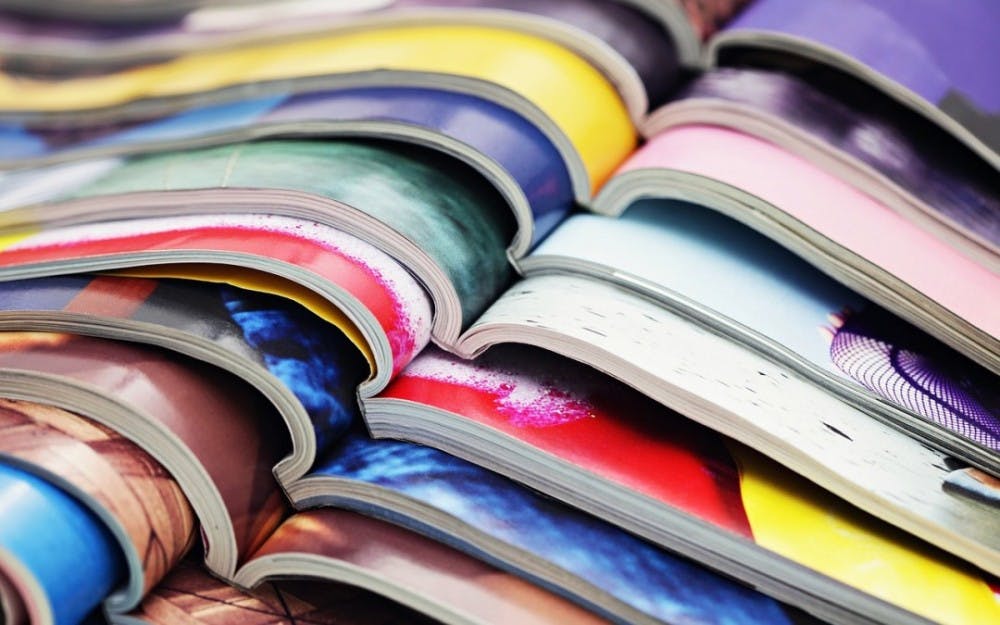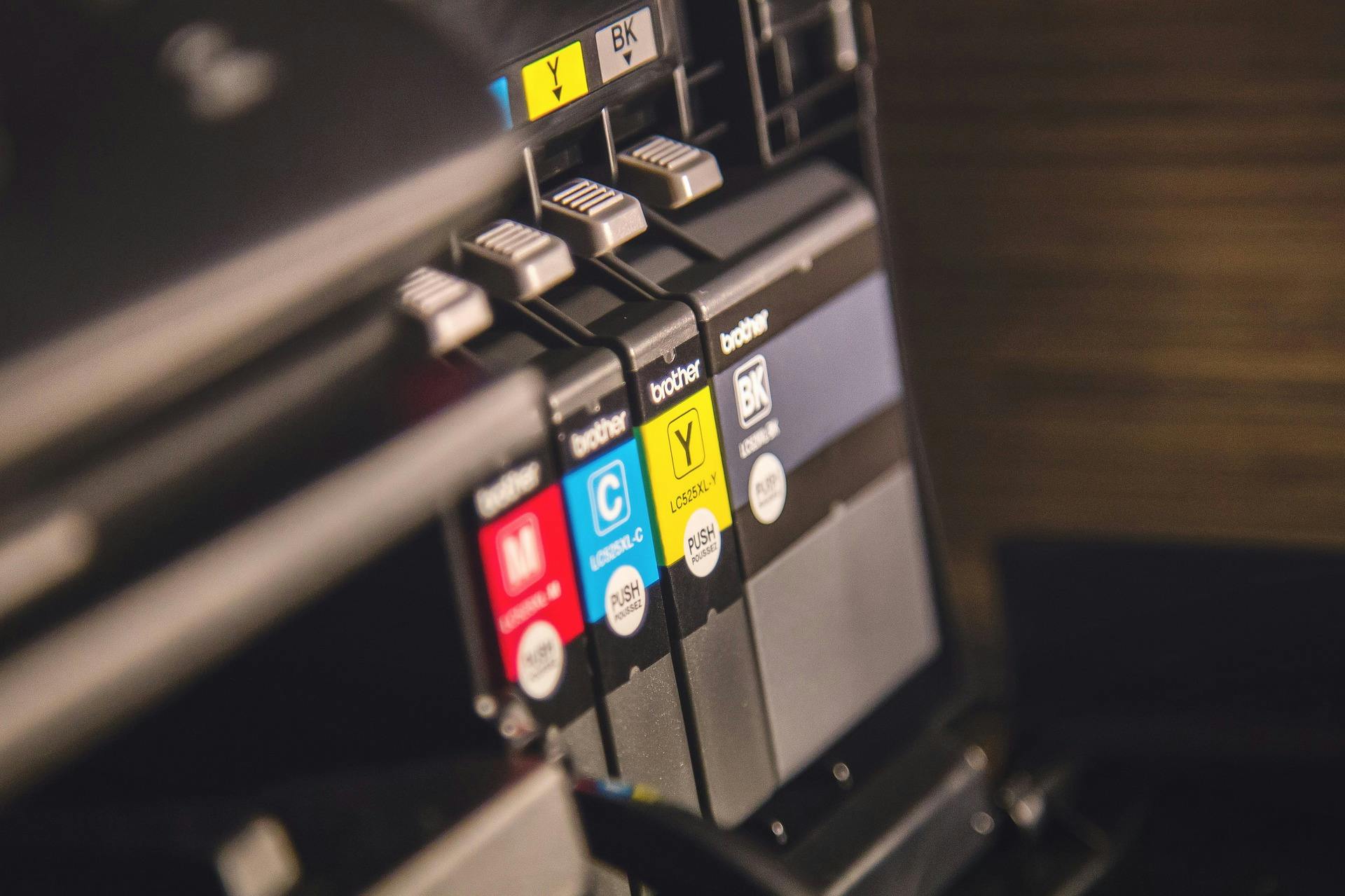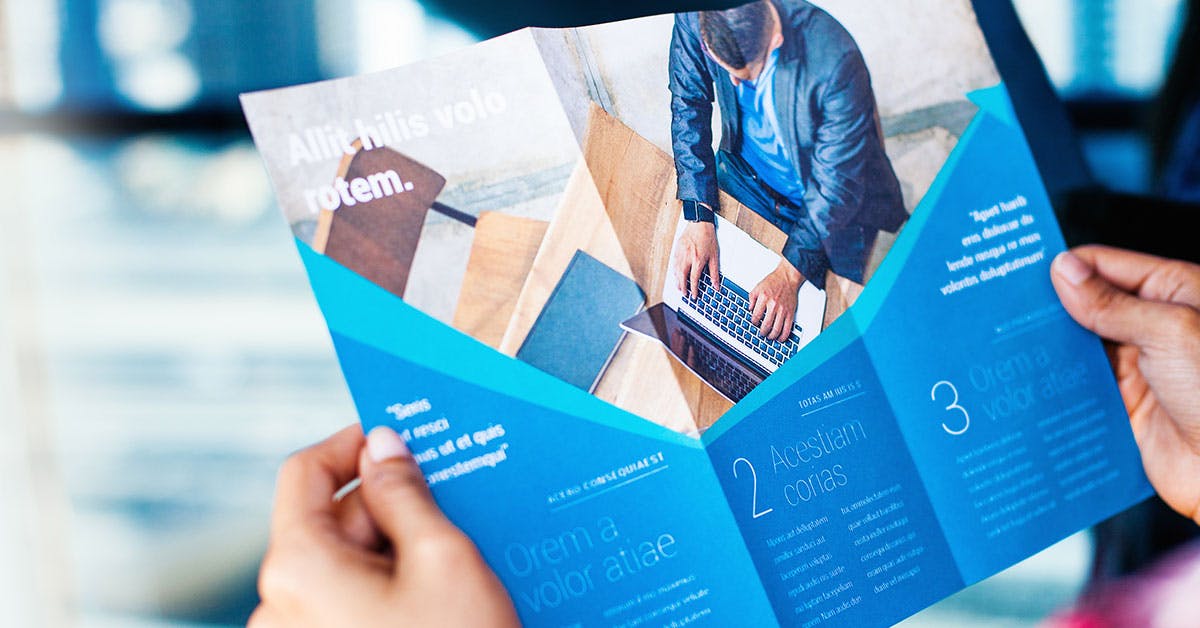Are you looking for a way to inform your customers about your products and/or services? Brochures are a great option because they combine highly informative copy with eye-catching visuals in a compact package. The two primary ways to use brochures are to either inform potential clients and customers about your services and/or products or remind them of the existence of those services and/or products. Your customers or clients may not know everything that you offer, or they may be in need of your services at a later date. Brochures work in both of these scenarios.
Plan for Your Purpose

The first step to creating an effective brochure is to determine your goal and the purpose for which the brochure is intended to be used. If your goal is to inform potential customers about one of your services, the brochure should focus solely on that service and provide as much information about it as possible. For example, a trash hauling company may have a brochure that breaks down the recycling process and the specifics of how their recycling service accomplishes each step.
Alternatively, you may be seeking to lay out all of your services for potential customers. Using the trash hauling example, this company may want to inform or remind customers that not only do they provide waste removal services, but also recycling, scrap metal, and dumpster rental services as well. A brochure for this goal would only offer brief descriptions of each available service but would list all possible services.
Beyond these two primary uses for brochures, they can also be used for more complementary purposes. When used in these ways, brochures may not inform readers of the direct products or services of the business. For example, if you have ever used a car rental service, you may have noticed tourist destination brochures within their place of business. Similarly, a food manufacturer may offer brochures including recipes that can be made using their products.
High-quality Imagery

A brochure that is nothing but text is not going to entice customers to pick it up and read it. The copy is important because it is what informs the reader. But if nobody picks the brochure up, all of that well-written copy has gone to waste. To solve this, you need to include high-quality imagery that fits the messaging. If your brochure is on a specific car that your dealership sells, add pictures of the car! The images should also be very large. Although the purpose of a brochure is to convey information, it is also a very visual medium.
Speaking of brochures being visual and conveying information, one way to capitalize on both of these aspects is to use infographics. Infographics keep readers engaged while they learn about your product or service. They are also a great tool for explaining complex processes in an easy-to-understand format.
Simplified Fonts

It is easy to go overboard with fonts when designing a brochure. Sometimes, once the creative juices begin to flow, you may be inspired to use many different and unique fonts. This is generally a bad idea. Too many different fonts or fonts that are unique will generally only serve to make your brochure harder to read. A better option is to keep it simple with a limited number of easy-to-read fonts. This will keep your brochure from looking too cluttered or, in some cases, even intimidating. Unless your business is artistic in nature, such as an art gallery, there is no need for overly fancy fonts.
Along with font styles, text colors and font sizes should be standardized as well. The color of your text should contrast with any background imagery it is overlaid on top of. Generally, light text on dark images works the best. Dark text on light images can work but is still sometimes difficult to read depending on the image used. As for font sizes, they should be sufficiently large. Again, you want your text to be as legible as possible. It is okay if you do not explain every detail about your product or service within the brochure.
Actionable Information
After all of the designing, it can be easy to forget what the real point of making a brochure is to begin with. Yes, your brochure is supposed to inform or remind potential customers about your product or service. But at the end of the day, it is really supposed to encourage them to take action. You want them to be convinced to make a purchase, contact you for more information, etc. The brochure should not simply tell them they can do something; it should tell them how to do it. For example, “call us at (xxx) xxx-xxxx for more information,” “schedule an inspection at www.website.com/schedule,” or simple instructions on how to perform the action in the brochure is meant to be used as a manual.
Conclusion
The secrets to designing an effective brochure are not actually all that secret; they are just overlooked. First, you need to plan out the purpose of your brochure. Second, you will have to collect high-quality imagery to entice customers to pick it up. Third, you should simplify your font options and ensure that they are legible. And finally, you do not want to forget to include actionable information and a call to action. By following this guide, you will be on the right track to creating an effective brochure that boosts your business.
Safeguard Premier Branding Solutions
If you are in need of brochures for your products or services, contact your local Safeguard Premier Branding Solutions representative today. Our sales reps can help you select the right paper, dimensions, and layout for your proposed design. And when you are ready to print, we are just a phone call away!

